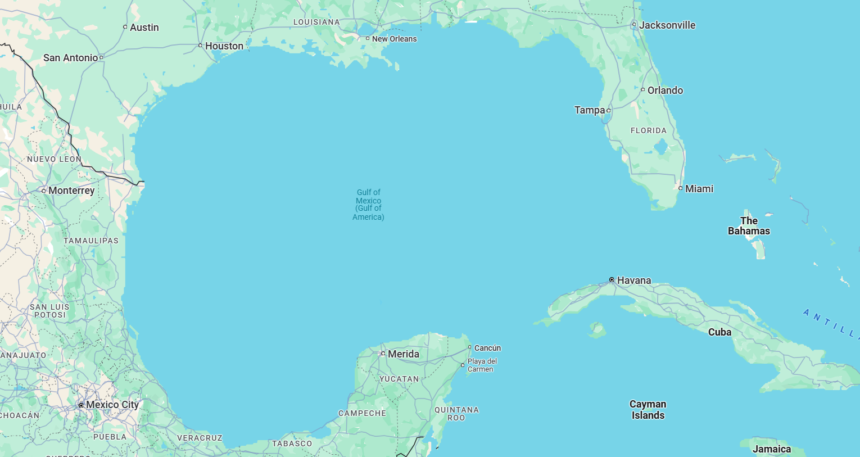In a surprising move, Google Maps has updated its designation for the Gulf of Mexico, renaming it the “Gulf of America” for users in the United States. This change follows an executive order issued by former President Donald Trump on January 20, 2025, marking a significant shift in geographical terminology. While the new name appears for U.S.-based users, it has sparked international controversy, with Mexico strongly opposing the alteration. As debates over the politics, accuracy, and implications of the renaming unfold, here’s a deep dive into why Google made this change, how different regions are seeing the update, and what it means for the future of digital cartography.
Why Did Google Maps Rename the Gulf of Mexico to the Gulf of America?
The renaming of the Gulf of Mexico to the Gulf of America on Google Maps is directly tied to an executive order signed by Donald Trump on the day of his re-election inauguration. The executive order, issued on January 20, 2025, directed all U.S. government agencies to adopt the name “Gulf of America” in official federal usage. This move aligns with nationalist sentiments and a push to “Americanize” geographical names associated with U.S. interests.
Google Maps, known for frequently updating its place names based on government records and local preferences, made the change to reflect U.S. federal government sources. The name now appears as:
✔ “Gulf of America” for users accessing Google Maps within the U.S.
✔ “Gulf of Mexico” for users in Mexico and other international locations.
✔ “Gulf of Mexico (Gulf of America)” in certain areas where both names are displayed.
Google has confirmed that this name update is based on location data, meaning users in the United States see “Gulf of America”, while those in Mexico and most of the world still see “Gulf of Mexico”.
How Does Google Determine Location-Based Naming?
Google Maps relies on multiple factors to determine which name to display to users:
✔ User’s physical location (based on IP address, GPS, or mobile network signals).
✔ Device settings, including language preferences and region settings.
✔ Search preferences, such as previous searches and browsing history.
✔ Official government sources, local names, and political developments.
Google stated that the name “Gulf of America” is applied only in the U.S. because it aligns with federal geographic records, while the rest of the world sees the traditional name.
Mexico’s Response: Strong Opposition to the Name Change
Unsurprisingly, Mexico has strongly condemned the renaming of the Gulf of Mexico. Mexican President Claudia Sheinbaum has publicly denounced the move, calling it “an attempt to erase historical and geographical truth.” She emphasized that the United States has no authority to unilaterally rename an international body of water.
✔ Sheinbaum has urged Google to reverse the change, arguing that the Gulf of Mexico’s name is recognized by international bodies, including the United Nations.
✔ Mexico’s government is reaching out to Google for clarification, pushing the tech company to respect historical names.
✔ Mexican officials warn that this could set a dangerous precedent, where governments pressure tech companies to alter geographical realities for political reasons.
Mexico maintains that the Gulf of Mexico has been recognized as such for centuries and that any formal name change would require international agreements.
How the Rest of the World is Reacting
The renaming has sparked intense debates worldwide, especially regarding the role of tech companies in reflecting geopolitical decisions.
✔ Latin American countries have expressed concern that this sets a precedent where powerful nations could influence global maps for political reasons.
✔ Historians and geographers argue that such a change undermines historical accuracy, given that the Gulf of Mexico has carried its name for centuries.
✔ Digital rights activists warn that this reflects a broader trend where tech companies comply with governmental changes, even if they are controversial.
Despite this backlash, Google has not reversed the decision, stating that its maps reflect localized government records rather than setting universal naming conventions.
How Other Mapping Services are Responding
While Google Maps has made the change, other digital mapping platforms have not followed suit.
✔ Apple Maps still refers to the region as the “Gulf of Mexico.” If users search “Gulf of America,” it redirects them to the traditional name.
✔ Bing Maps and MapQuest have yet to adopt the new name, sticking to historical geography.
✔ OpenStreetMap, a user-driven platform, has locked the name to prevent edits, ensuring “Gulf of Mexico” remains its official name.
This inconsistency raises questions about the power of digital platforms and how they shape public perception through name changes.
Will Google Reverse the Name Change?
The future of this name change remains uncertain. While Google follows government records, it has reversed controversial name changes in the past due to public backlash.
✔ Google has faced criticism before, such as when it changed disputed region names based on political events.
✔ If international pressure mounts, Google may introduce an option for users to “select their preferred name” in settings.
✔ A legal challenge from Mexico or international organizations could force a reconsideration of the update.
As of now, Google has not issued a statement suggesting they will reverse the change, but international pressure could influence their decision in the coming months.
What This Means for the Future of Digital Cartography
The Gulf of America controversy raises deeper questions about the power of tech companies to shape reality.
✔ Should mapping services reflect political decisions or remain historically accurate?
✔ How much influence should governments have in dictating place names in global services?
✔ Will future administrations in the U.S. reverse this change, or will it become the new standard?
Digital maps are not just tools for navigation—they shape how we understand the world. As geopolitical tensions rise, Google’s decision could be the first of many battles over digital place names.
Final Thoughts: Is This the Start of More Political Map Changes?
The renaming of the Gulf of Mexico to the Gulf of America on Google Maps is more than just a name change—it’s a politically charged move that reflects the power struggle between governments and tech companies. While the U.S. government may push for such changes in the name of nationalism, the international community’s response shows that not everyone is willing to accept it.
✔ Should Google Maps comply with U.S. government orders, even when they contradict international consensus?
✔ Will Mexico successfully pressure Google to reverse the change?
✔ How will other mapping platforms handle this dispute?
As this debate unfolds, it’s clear that the battle over digital geography is just beginning. What do you think about Google Maps renaming the Gulf of Mexico? Should tech companies comply with government orders or stick to historical names? Let us know your thoughts in the comments below!






